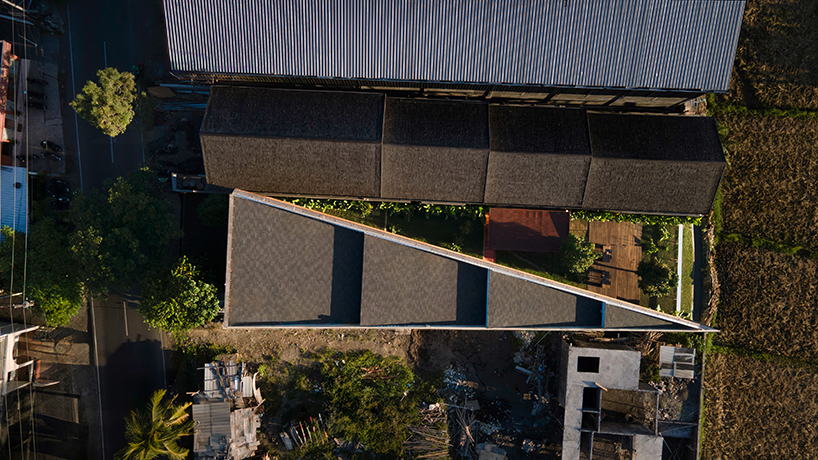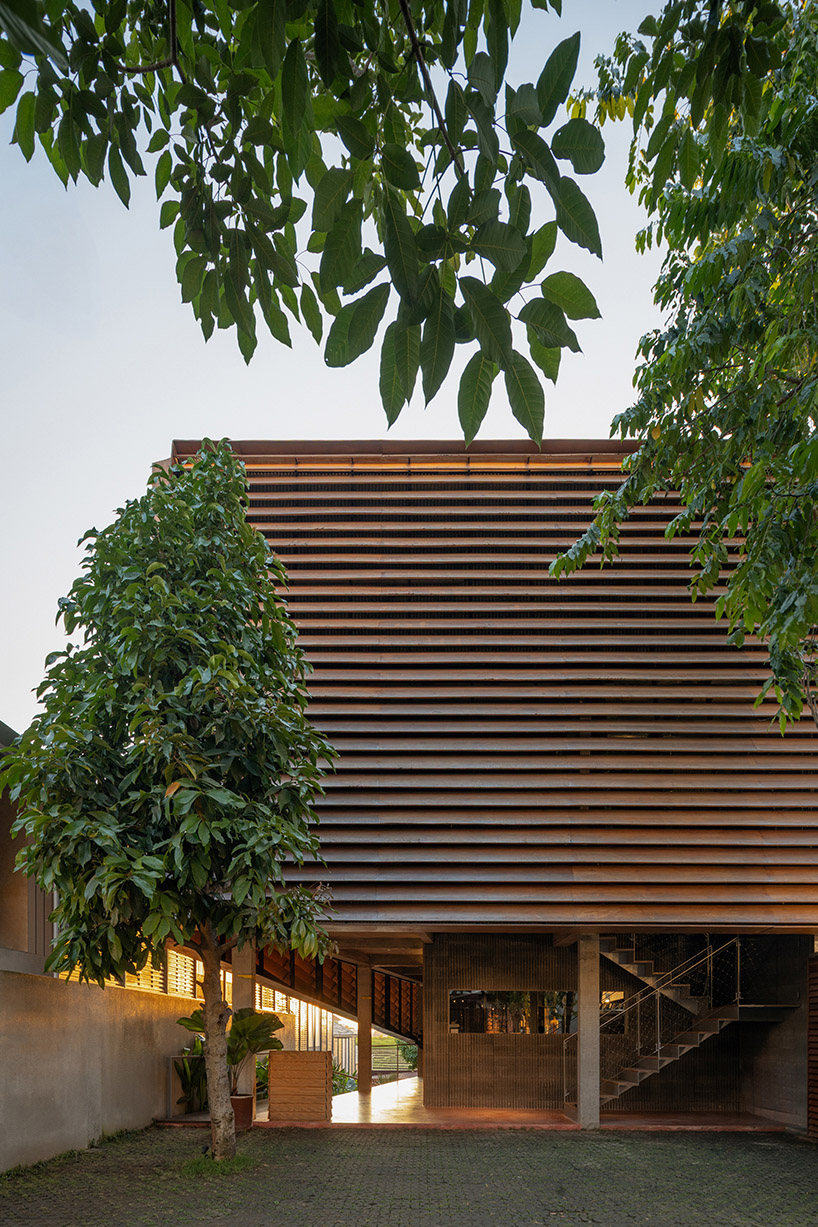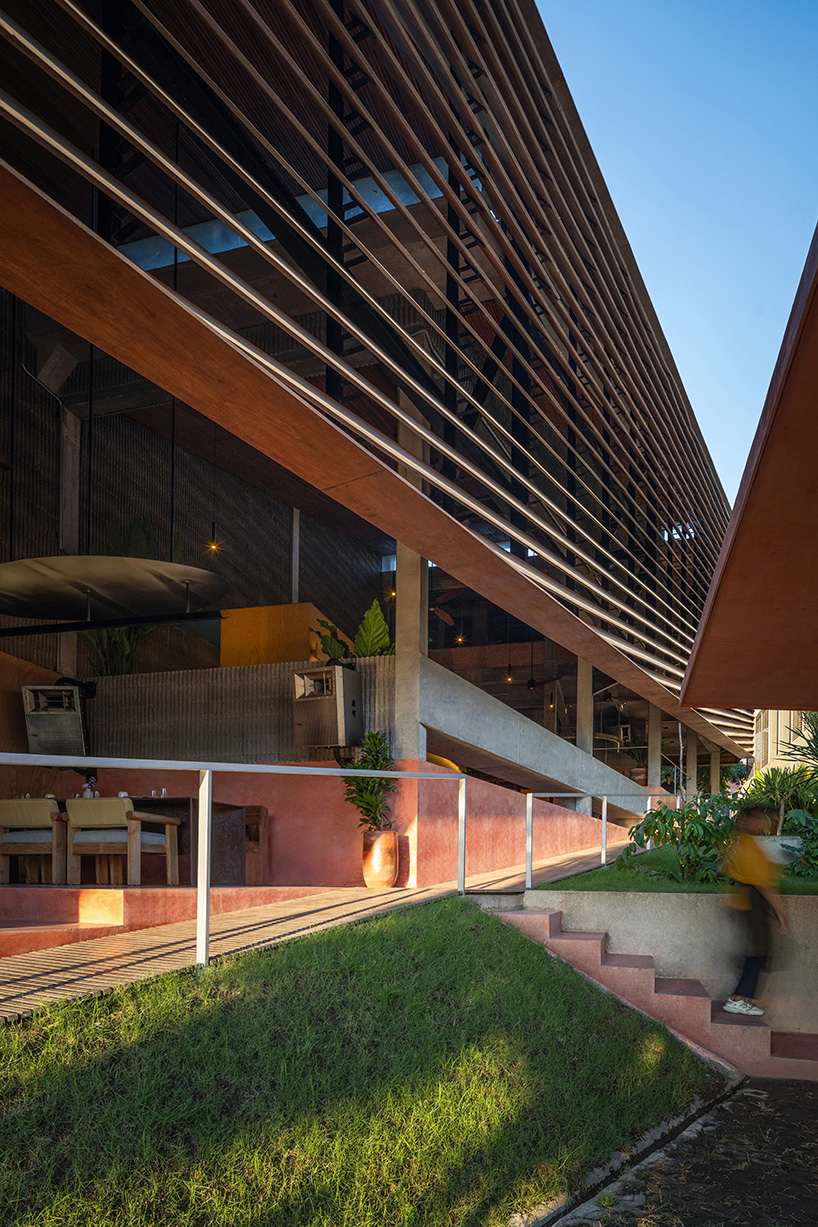set n rise flows with the landscape of bali’s rice terraces
In the village of Pererenan, just outside the bustle of Canggu in Bali, Set n Rise is a semi-open-air Asian grill designed by Studio Kota. The architects draw from the island’s iconic rice terraces, resulting in a dining experience that unfolds one level at a time, stepping gently down the sloped terrain. The design brings guests closer to the land, with open views across the fields and sunlight filtering through timber fins.
the building enjoys unobstructed views of the surrounding terraced paddy fields
four staggered platforms form the restaurant
Set n Rise is built on a narrow site with a five-meter drop from front to back. Jakarta-based Studio Kota sculpts the building to follow the slope, shaping a triangular form that naturally fits the land. Openings to the east and south let in plenty of daylight and keep the rice fields in constant view.
The restaurant is a series of four staggered platforms, each aligned with the terrain. Guests move between them along a central ramp that ties everything together and makes the space accessible. At the street-level entrance, the open kitchen and bar set the tone with cast resin and textured concrete. The next platform introduces more casual seating and hides away the restrooms. Further down, the third level invites social gatherings with a bar, DJ booth, and dining tables. The lowest platform connects to a garden and a small outdoor amphitheater, where guests find themselves at eye-level with the rice fields, one final step that brings the whole experience full circle.

the architecture moves with the land, embracing the site’s topography
Timber slats wrap the facade of the project’s boutique
Above the Set n Rise restaurant, a small boutique adds another layer to the building without taking away from the open feeling below. The material palette throughout, composed of pigmented cement, rough concrete, and locally sourced timber, feels earthy and grounded, matching the textures of the surrounding landscape. Timber slats wrap the facade, referencing the lines of the terraces and filtering in sunlight and breeze. They also provide shade and rain protection, helping the building stay comfortable in Bali’s tropical climate.

the design maintains a balance between built form and open landscape

a facade of vertical wooden fins filters sunlight

a ramp serves as the primary vertical circulation

